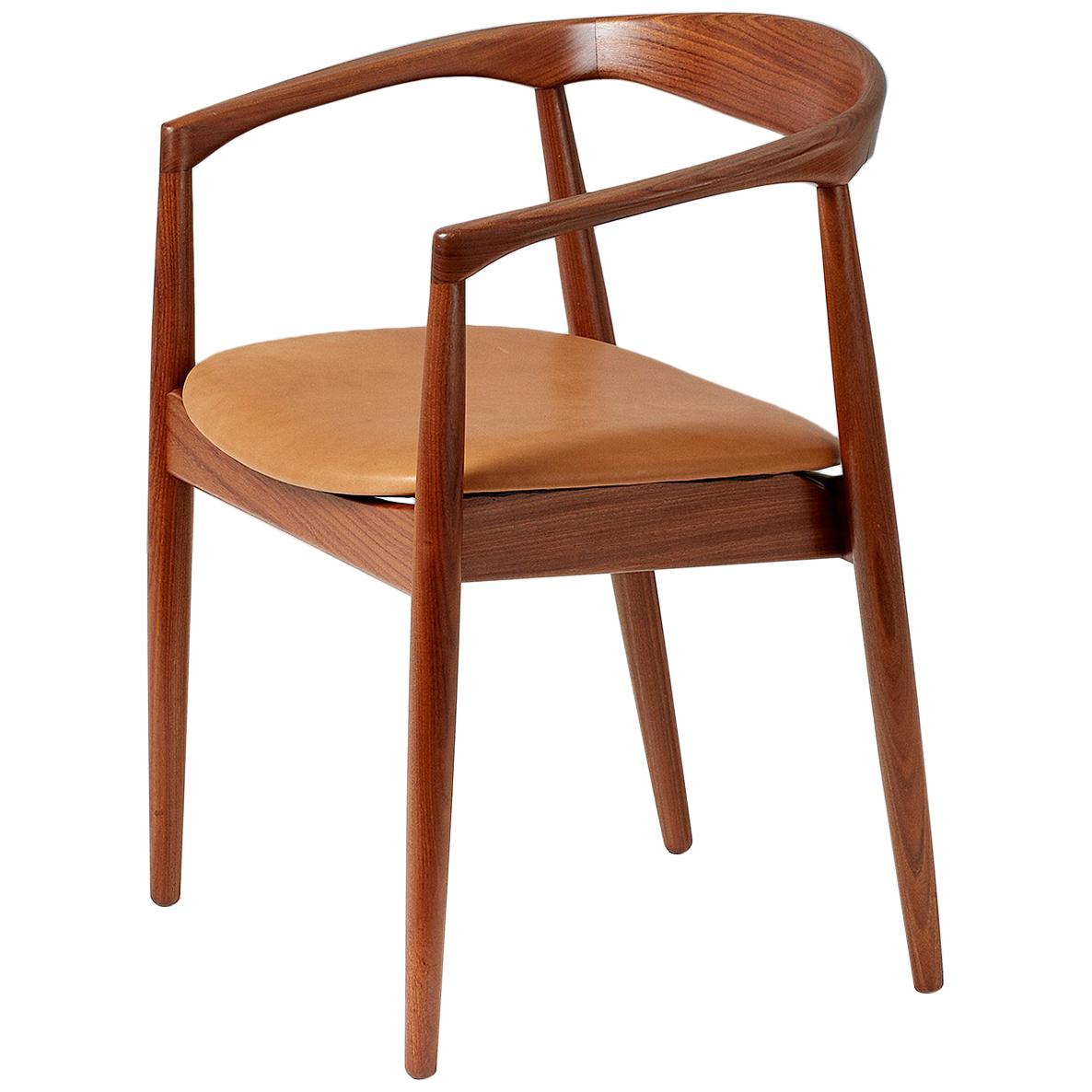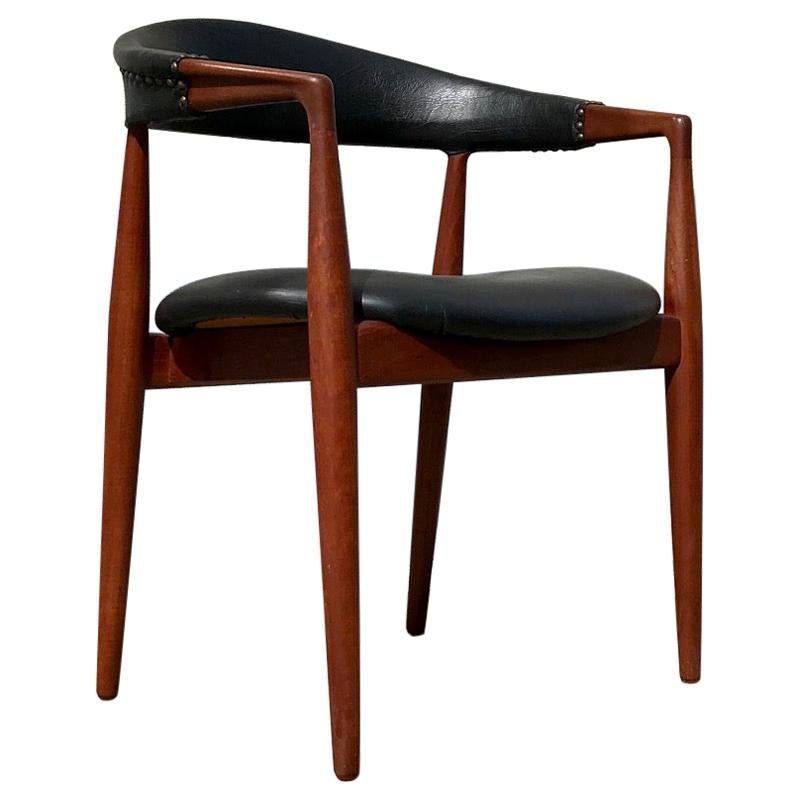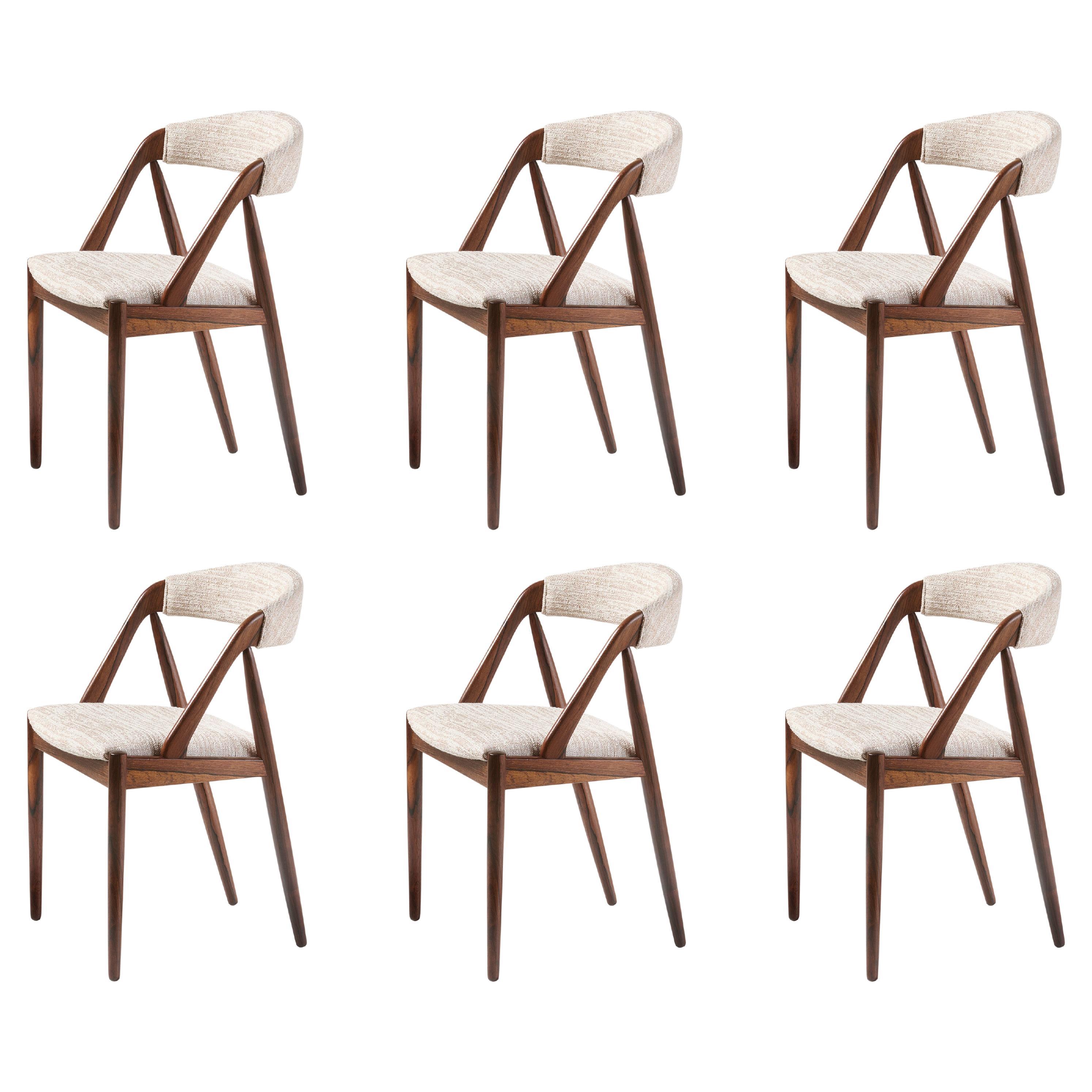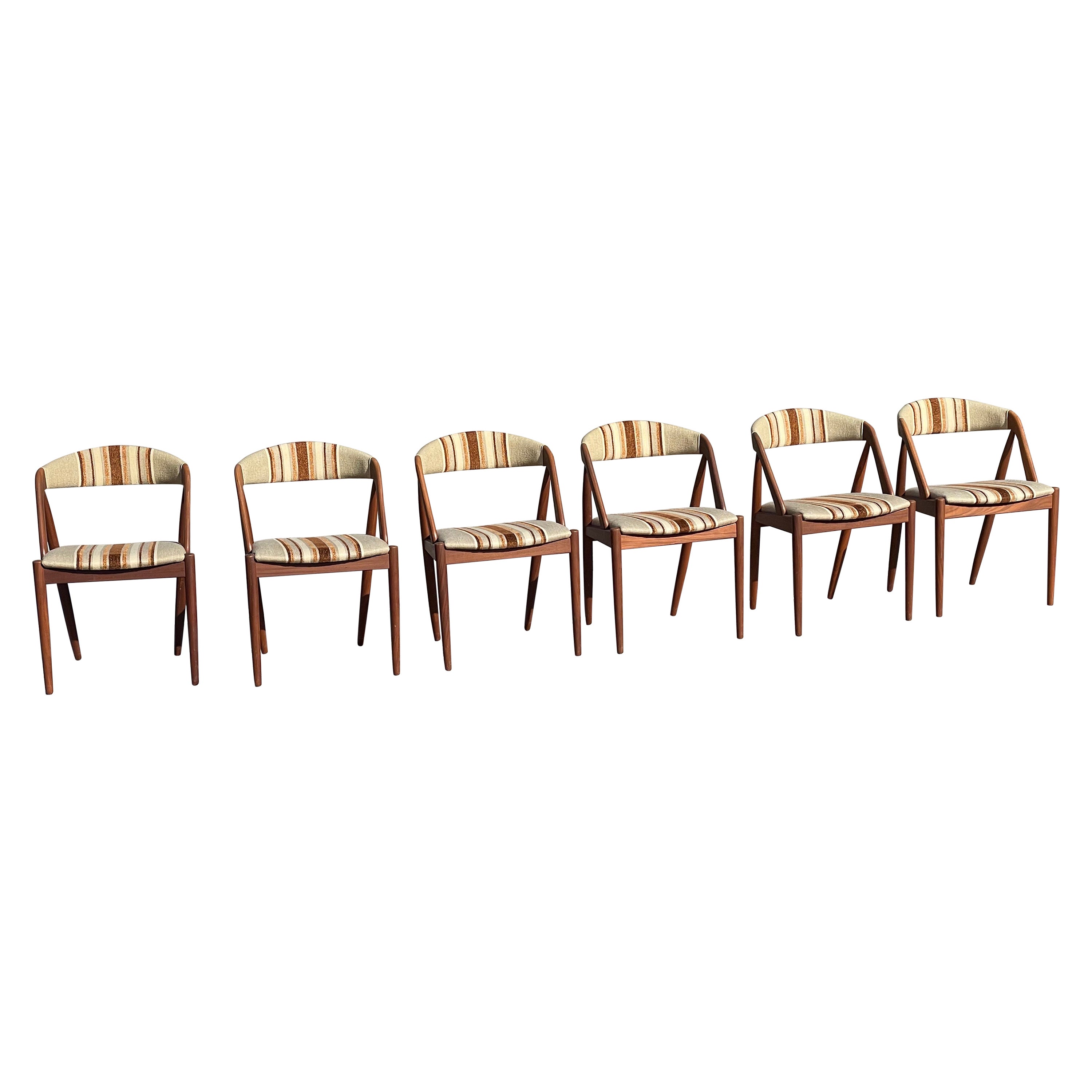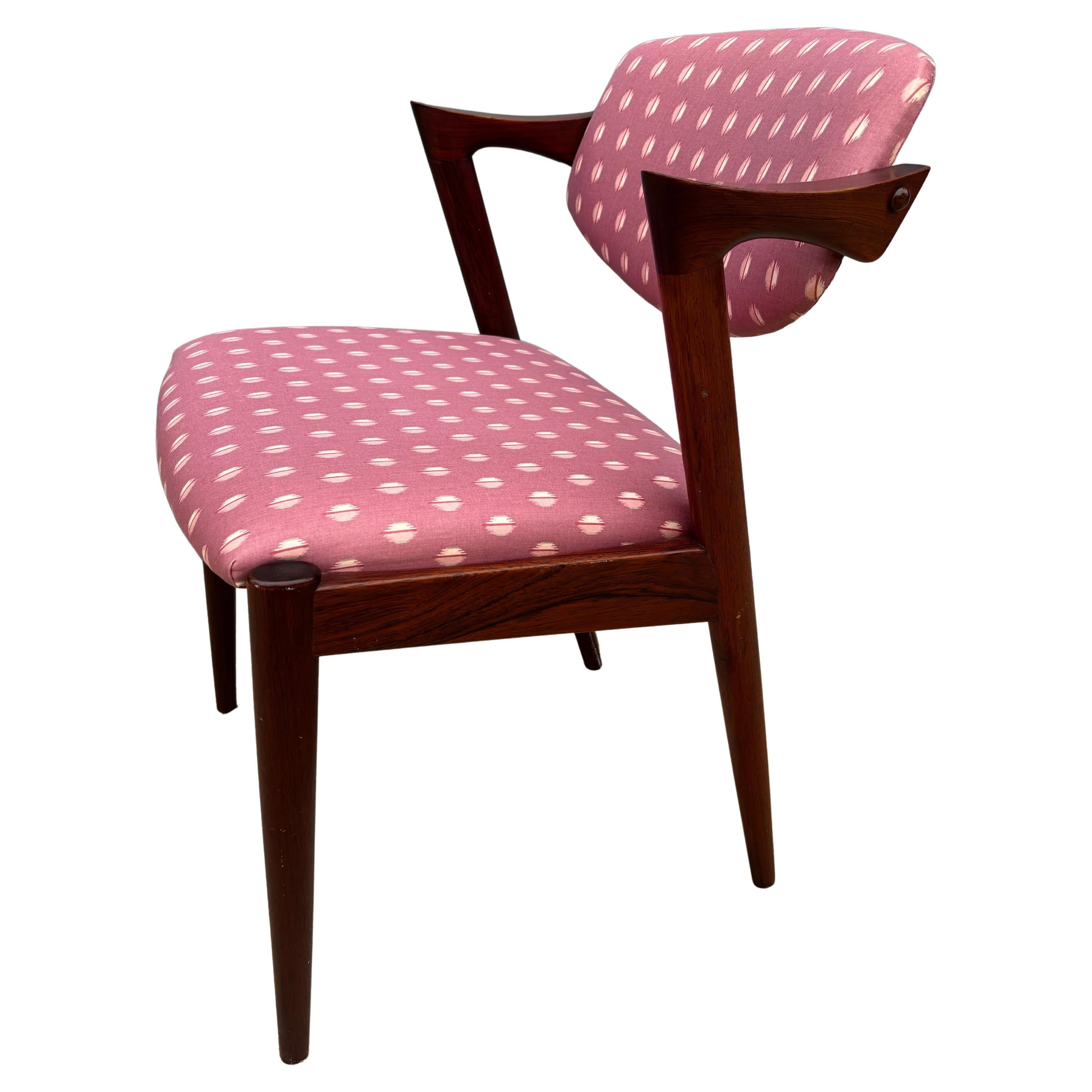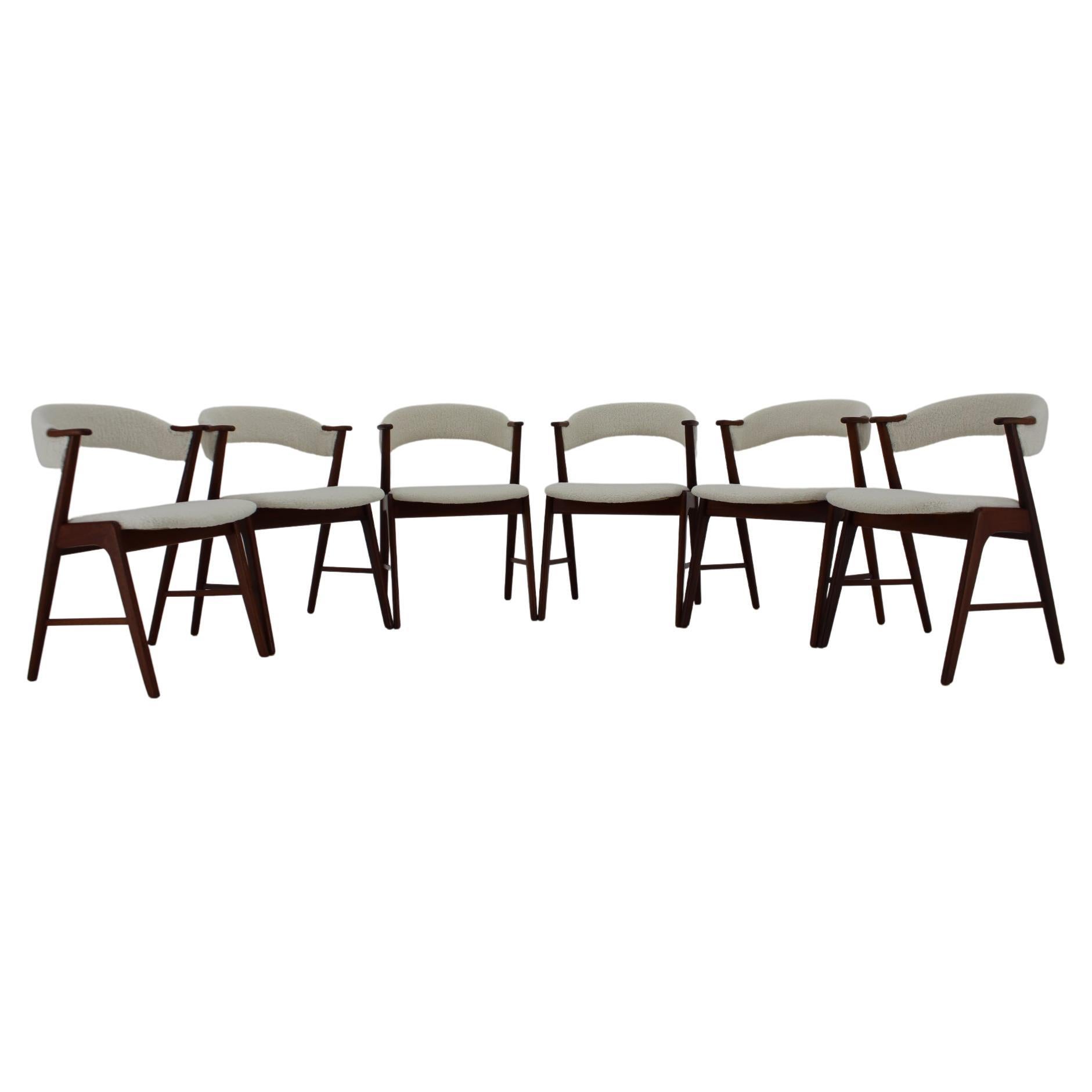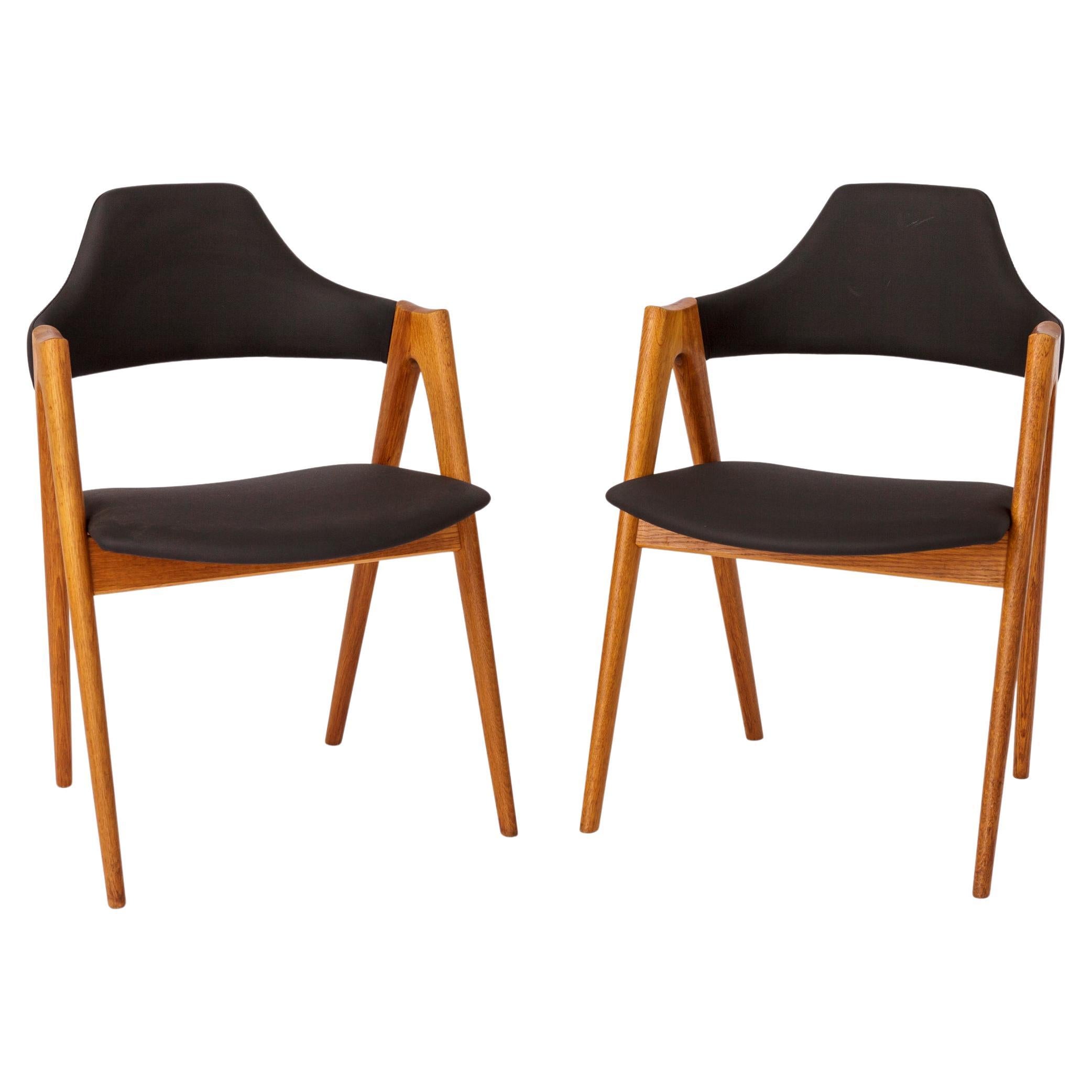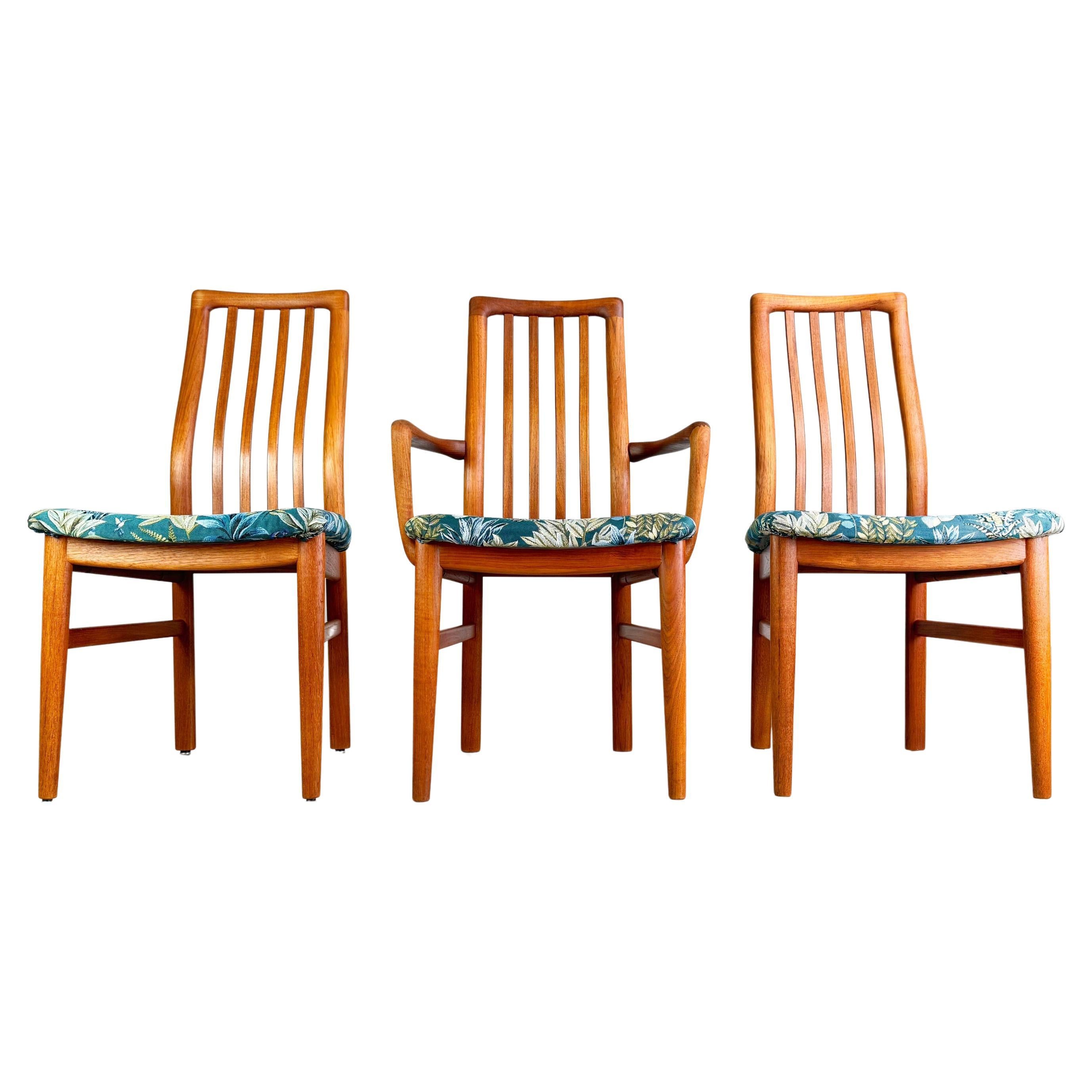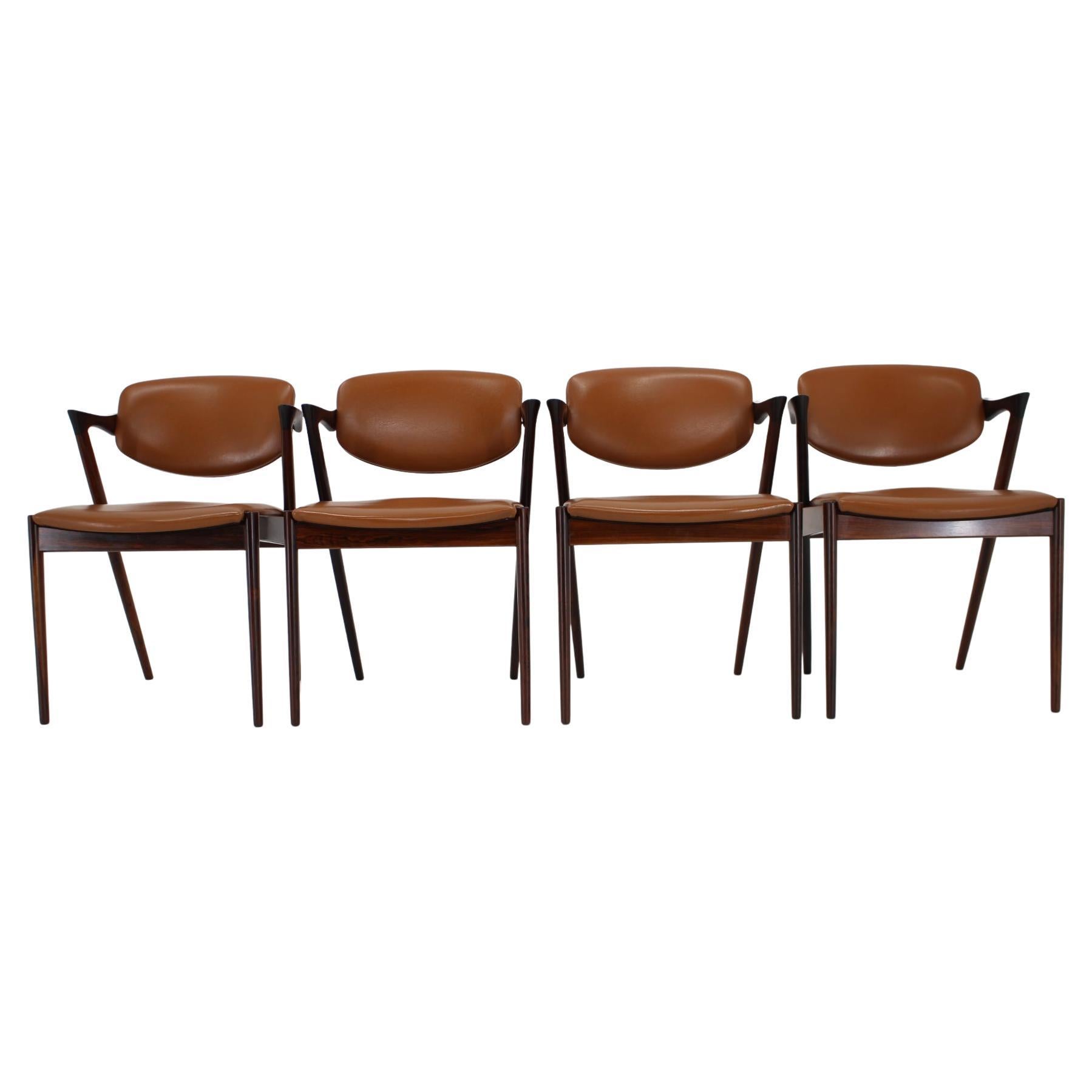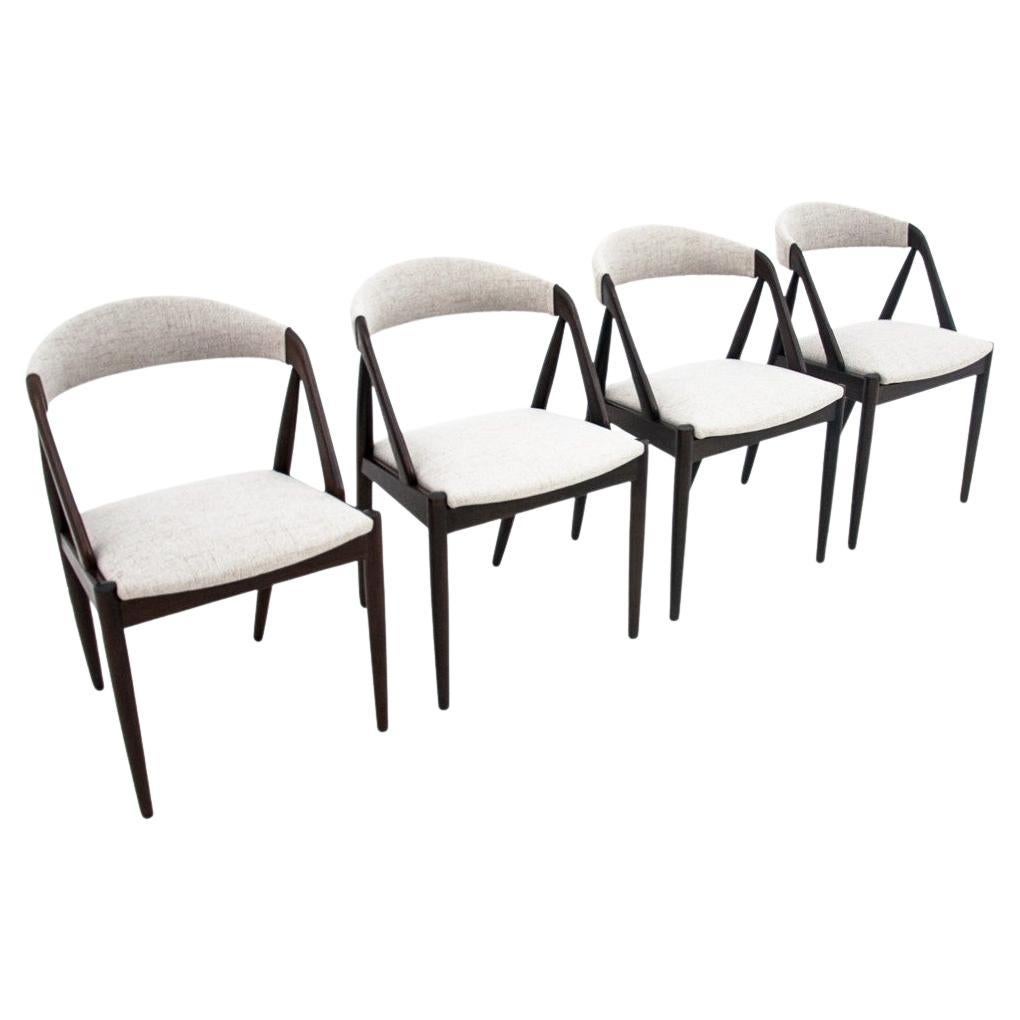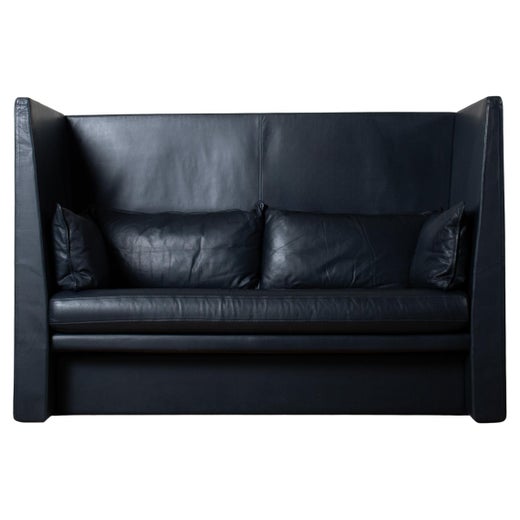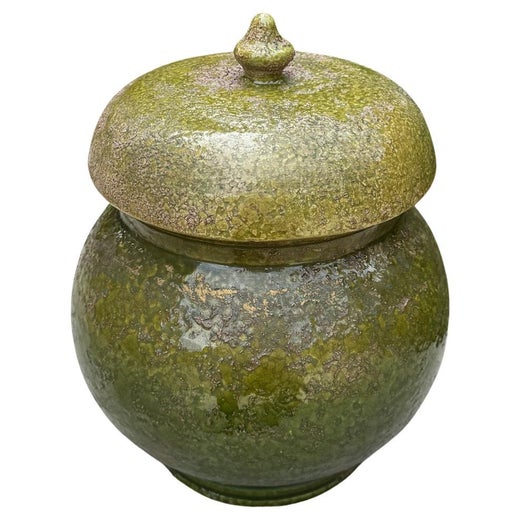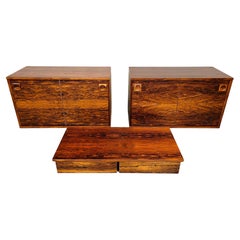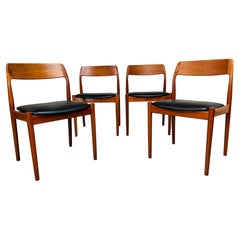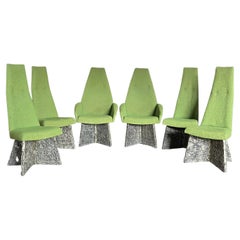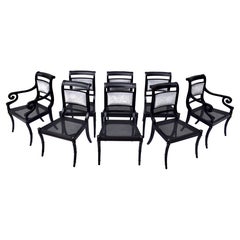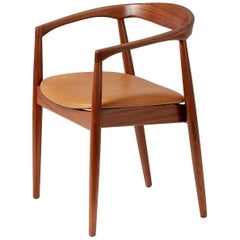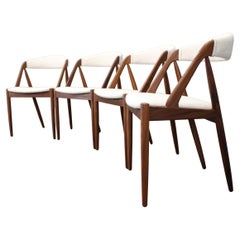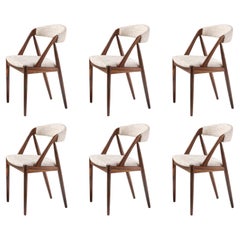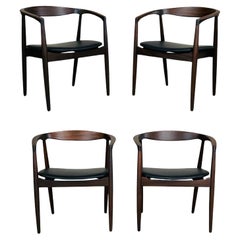
Set Of 4 Kai Kristiansen Round Teak Troja Armchairs, c1960
View Similar Items
Set Of 4 Kai Kristiansen Round Teak Troja Armchairs, c1960
About the Item
- Creator:Kai Kristiansen (Designer),Raymor (Manufacturer)
- Dimensions:Height: 28 in (71.12 cm)Width: 24 in (60.96 cm)Depth: 19 in (48.26 cm)Seat Height: 16.5 in (41.91 cm)
- Sold As:Set of 4
- Style:Scandinavian Modern (Of the Period)
- Materials and Techniques:
- Place of Origin:
- Period:
- Date of Manufacture:Circa 1960
- Condition:Reupholstered. In excellent condition having fresh cushioning and durable yet soft high end stain proof synthetic leather. The wood frames have all been cleaned and treated for longevity. The frames are all solid.
- Seller Location:Southampton, NJ
- Reference Number:Seller: Blair1stDibs: LU1566238593172
Kai Kristiansen
With a passion for math and engineering, Kai Kristiansen has created high-quality wood furniture for decades. Beginning in the 1950s, his coffee tables, chairs, modular shelving and other furnishings were made in the style that would become internationally renowned as Danish modern and boasted clean lines, perfected functionality and exacting craftsmanship.
Born in Denmark, Kristiansen trained in cabinetmaking before studying with Kaare Klint, often cited as the “father of modern Danish design,” at the Royal Danish Academy of Fine Arts in Copenhagen. At just 26 years old, Kristiansen opened his own studio.
Kristiansen had his mid-century breakthrough in 1956 with the Chair #42, which he made with Schou Andersen. Unlike most other chairs at the time, Chair #42’s armrests, with their wealth of radical angles, were connected to the back rather than the front legs. This unconventional flourish makes the backrest appear as though it is floating in midair above the seat.
Kristiansen’s next innovation was a modular wall system in 1957 — three years ahead of Dieter Rams’s more famous 606 Universal Shelving System. Called the Reolsystem Wall Unit, produced by SB Feldballes Møbelfabrik, it’s also known as the FM Wall Unit as FM/Fornem Møbelkunst began producing it in the 1960s.
Kristiansen would go on to work with other leading Danish furniture manufacturers such as Magnus Olesen, Fritz Hansen and Vildbjerg Møbelfabrik, designing everything from chairs and desks to sideboards and cabinets, frequently in rosewood and teak. (The latter was a sought-after wood by Scandinavian modern designers.)
While many of Kristiansen’s timeless designs remain in production, such as his Paper Knife sofa, which was reintroduced by Miyazaki Chair Factory in 2008, and his 1950s Entré collection, which was relaunched with Great Dane Furniture in 2016, others are prized as vintage mid-century pieces.
Today, Kristiansen is still at work on new furniture with an expert eye to thoughtfully functional designs that are made to last.
Find a collection of vintage Kai Kristiansen furniture on 1stDibs.
Raymor
Few had their finger on the pulse of American furniture like importer and distributor Raymor. Founder Irving Richards first had his eyes opened to the world of furniture while attending the 1928 Salon d’Automne art and design fair in Paris. He joined Lightolier two years later and developed its business relationships, including with designer Russel Wright.
Wright and Richards met in 1935 and Russel Wright, Inc. was formed in 1936. Its American Modern ceramic tableware, produced under the name Wright Accessories in 1938, was a notably lucrative collaboration. Following the early success of American Modern, Richards obtained the majority share of Wright Accessories and changed its name to Raymor Mfg Division Inc. in 1941.
By 1952, the exclusivity over American Modern had ended (the line was initially produced by Wright Associates and later manufactured by Steubenville for two decades). To keep up with American markets, Raymor worked with prominent designers such as George Nelson, Arthur Umanoff, Ray and Charles Eames, and Hans J. Wegner.
The company’s imports expanded to Denmark, which contributed to the rise of Scandinavian modern designs in the American market. Throughout the 1950s, Richards established relationships with factories in Scandinavia, Italy and Germany, as well as with the influential tastemaker and importer Charles Stendig.
The furniture company Simmons bought Raymor in 1963 and changed its name to Raymor Richards, Morgenthau Inc. in 1969. During that time, Raymor’s Omnibus range of Scandinavian-style wall units became widely popular, along with Italian glass and pottery like Bitossi ceramics designed by Aldo Londi and Bagni ceramics by Alvino Bagni.
Shifting styles coupled with rising competition, and the departure of Richards from the company, ended Raymor. By the late 1970s, Raymor faced a wave of international factories able to produce similar products of lesser quality for a lower cost. Buyers were eager to frequently change their interior styles, limiting the need for high-end, durable furniture, which Raymor had been importing.
On 1stDibs, find a collection of vintage Raymor ceramics, lamps, decorative objects and more.
More From This Seller
View AllMid-20th Century Danish Scandinavian Modern Cabinets
Felt, Wood, Rosewood
Mid-20th Century Danish Scandinavian Modern Dining Room Chairs
Faux Leather, Teak
Vintage 1960s American Dining Room Chairs
Resin
2010s American Regency Dining Room Chairs
Belgian Black Marble
Mid-20th Century American Mid-Century Modern Dining Room Chairs
Mahogany, Upholstery
Vintage 1960s German Mid-Century Modern Dining Room Chairs
Fabric, Oak
You May Also Like
Vintage 1960s Danish Scandinavian Modern Armchairs
Teak, Leather
Vintage 1950s Danish Mid-Century Modern Armchairs
Teak
Vintage 1960s Danish Mid-Century Modern Dining Room Chairs
Fabric, Teak
Vintage 1960s Danish Scandinavian Modern Dining Room Chairs
Wool, Bouclé, Rosewood
Vintage 1950s Danish Mid-Century Modern Dining Room Chairs
Teak
Vintage 1960s Danish Scandinavian Modern Dining Room Chairs
Upholstery, Rosewood
